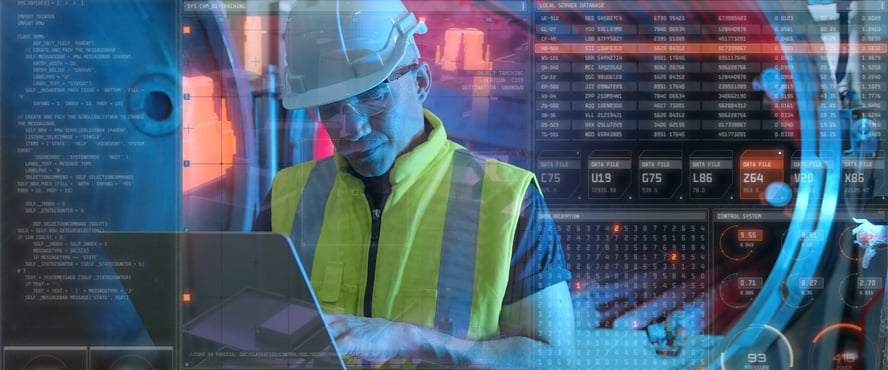
Think of some of the world’s most iconic buildings and infrastructure, the Jeddah Tower, the Burj Khalifa, the Empire State Building, the Sydney Harbour Bridge, or the Shard in London.
Will they look the same in 100 or 200 years? How will they operate? Will they still be standing?
The Romans, Greeks, Persians, and Egyptians built structures to last thousands of years. Today, archeologists uncover these structures to determine how they were made and constructed. While it’s likely their origins were to improve society, they mainly exist now as tourist attractions.
What can we learn from looking back?
For starters, physical assets change over time—for better or worse. Some fall into disrepair. Others take years to restore or demolish. Some improve—especially when upgraded to include the latest tech, retrofitted to become more sustainable, or repaired to better the asset.
So, how will you ensure your buildings, homes, and infrastructure projects endure?
Data is the answer. What to know how an asset was designed, planned, constructed, and managed? Data can turn a structure into a living, breathing asset. Visualize the invisible. Data can tell you what is happening throughout your asset’s lifecycle and beyond.
Ultimately, data helps you unlock the digital soul of your asset, and the benefits are huge.
 Capturing and Maintaining As-Built Data
Capturing and Maintaining As-Built Data
So, your building is complete. What’s next? Typically, Tier 1 contractors deliver asset owners and operators with an as-built. You know now how it was built—from the walls and doorways dimensions to the pipe location to which materials were used for insulation.
Not so fast. There are some pieces of information—from the electrical contractor to the bricklayer—that maybe didn’t make it into the as-built.
For the first years, you’re fine. But assets live on for hundreds of years—long after anyone remembers that specific bit about lobby doorframes. Problems occur if you never store the knowledge for later or transfer knowledge from one project to the next.
Uh-oh. Now, your valuable project knowledge is lost forever. This is particularly problematic when a wealth of knowledge remains with individual project members and is not widely shared.
But what if you could gather and manage data throughout the asset lifecycle? Suppose you set up data monitor and capture devices and leverage the right technology. In that case, this data can be gathered, managed, and maintained—all the way down to the weather condition on installation day for certain elements.
With good data management, you won’t lose this valuable information. This makes it available to those managing the asset 10 years or 100 years in the future.
Otherwise, the construction team tasked with retrofitting your 100-year-old building will struggle. The as-built won't match what’s in front of them. The entire project ends up on its back foot before it’s even begun.
Why not provide a guidebook for future teams? This is what occurs when capturing data during the asset lifecycle and into its operation and maintenance phase. Now, future asset managers or construction teams can use this data to improve how they do their jobs.

Back to the Future with Digital Twins
Good data isn’t just beneficial for today. Yes, it will enhance your decision-making and ensure asset knowledge is captured and maintained. But it also provides a way to look into the future—no crystal ball required.
Asset owners and managers can use data from their asset—gathered throughout the asset lifecycle—to create a virtual replica of the asset—a digital twin.
By simulating conditions, building stakeholders can create what-if scenarios, predict results more accurately, and prepare their buildings. For example, a digital twin can test how a building would respond to flooding. Or it could show where water may get in and allow asset owners to plug the gaps.
But these simulation capabilities aren’t just for disaster scenarios. You could run data simulations on:
- New transport networks
- How potential new buildings impact the surrounding environment
- How population growth will impact a region
For example, Singapore created a virtual representation of the city as a simulation model. Here, it allows designers and planners to test real scenarios in a digital space. These results can help plan and develop an action plan to combat challenges as they arise.
Ultimately, data can help “future-proof” assets and integrate resilience into how the construction industry operates.
Why Data is Failing to Live Up to its Potential
Despite its potential, the construction industry isn’t making the most of the data it collects.
Why?
A single asset brings together countless stakeholders across its lifecycle. Asset owners, project managers, architects, engineers, contractors, sub-contractors, and material suppliers come from different disciplines and deliver work in various formats.
The good news is you have a vast amount of data. The bad news is if you can’t manage and organize this data, it quickly becomes unstructured, uncoordinated, and inaccessible.
Often it is as simple as software not speaking the same language.
According to JBKnowledge’s 2021 Construction Technology Report, more than 24% of construction software applications don’t integrate. The result of this lack of integration? Data silos. When unintegrated tools keep valuable project data hostage, the ability to make the most of data evaporates.
But data silos are avoidable. Valuable information doesn’t just have to sit with individual workers. They may quickly move from one project to the next, taking valuable knowledge with them. Nor does it have to reside in a single platform or desktop folder—never shared or seen by another soul.
When silos are removed, you can reap the power and potential of data.

Unlocking the Power of Data with a CDE
So, how do you harness and use this valuable data? How can you tap into the transformative potential for today and tomorrow?
The answer lies in a Common Data Environment (CDE).
A CDE is a central repository that provides a single source of information for the project. It is used to collect, manage, collaborate, and share project information with the project team.
Simply put, a CDE takes all the data and information associated with a project and stores it in one single shared area. The entire team can access and update their details as a project progresses.
In this way, a CDE facilitates the golden thread of information—quality and up-to-date flow of information throughout the asset lifecycle. This centralized knowledge base allows sharing throughout the project, ensuring information is not lost when teams move on.
The result? Improved accuracy, efficiency, and productivity, saving time and money. A KPMG report suggests a CDE is so vital to productivity that between £5.10 and £6 of direct labor productivity gains could be made for every £1 invested in information management, with between 1.6% to 18% cost savings possible at different asset lifecycle stages.
In North America, this equates to roughly $7 and over $8 cost savings for every $1 invested in improving information management. In the UAE, between AED 23 and AED27 for every AED5. In Saudi Arabia, between SAR23 and SAR28 for every SAR5 invested.
Ultimately, a CDE gives you control over your projects and the management of your finished assets. All stakeholders work within the same collaborative environment—from the same shared information so future stakeholders can tap into this valuable information.
At Asite, this is what we do best. We provide every project stakeholder—from contractors and those on-site to project managers and asset owners—with the tools and solutions to succeed.
Everyone involved in a project can input their data and information into one secure location with the Asite CDE. Project data is secure and accessible for all project teams during the planning, design, engineering, and construction phases and beyond.
Ready to unlock the digital soul of your assets? Find out how a CDE can help your projects get future-ready, learn more here.
4 minute read
Asite Insights in your inbox.
Sign up for product news and our latest insights published monthly. It's a newsletter so hot, even global warming can't keep up.




